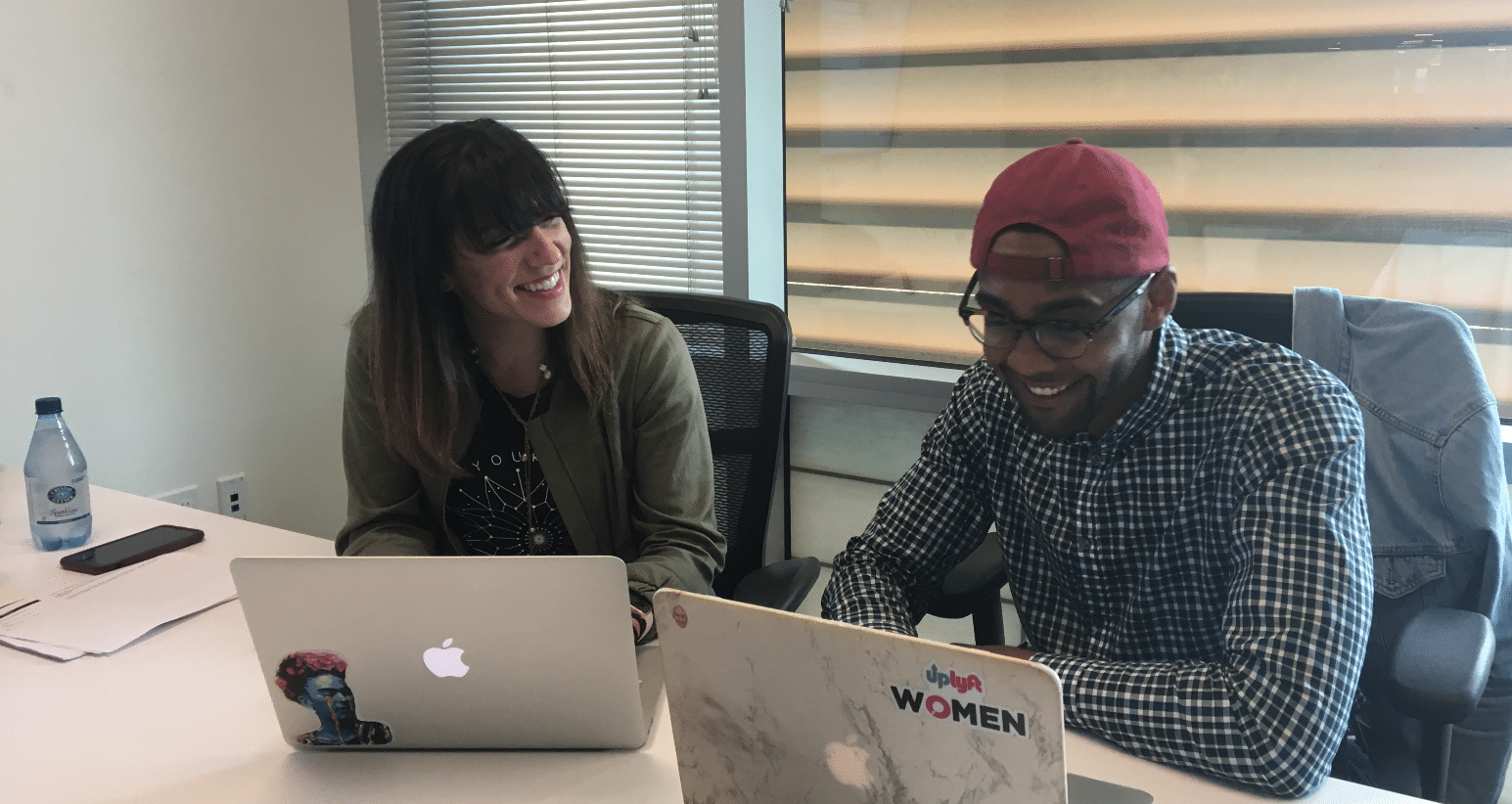Today, the drive to embed diversity and inclusion in the workplace pulses with more urgency than ever before. Invigorated by the discourse, we’ve been sharing the diversity tactics we’ve used to build the culture we’re proud of here at Lever. As we all – companies of all size and industries – aim to hire diverse talent, we have to continually learn tactical insights from each other.
These days, all eyes are on the team at Lyft. As they successfully implement initiatives to build a diverse and inclusive workplace, they are quickly becoming a model for teams across the globe. Last week, we were excited to co-host a webinar with Teamable to spotlight their commitment to diversity and inclusion. Below, Technical Recruiting Lead Adrianna de Battista reveals 3 of their key diversity recruiting tactics
Rethink your pipeline strategy
To build a diverse pipeline, Lyft is strategic about how they proactively source candidates, gather employee referrals, and manage applicants.
When sourcing, Adrianna seeks out candidates with diverse work experience. “I try to reach out to self-taught engineers who submit their work online, for example, or reach out to candidates who’ve built their own app,” she says. She also sources offline, i.e. hosts and attends events, as often as possible. A year ago, Adrianna met an engineer at a ‘black in tech’ event, who introduced her to his friend in search of a new role. Today, that friend is a Lyft employee who sends her referrals and helps her plan recruiting events. “He’s the gift that keeps on giving,” she says. “It’s all because I immersed myself in the black engineering community in Seattle last year.”
To find a diverse pool of referrals, Adrianna hosts referral-a-thons – where team members gather and submit as many passive leads into Lever as possible. Referrals are hugely valuable (1 in 16 referred candidates are hired), so even senior leaders are encouraged to participate in the sessions. Pro tip? Get your team excited about referral-a-thons by providing food, fun tunes, and prizes for those who submit the most referrals.
To diversify her pipeline of applied candidates, Adrianna works with third party platforms like Jopwell and PowertoFly that share open roles with diverse communities. She also frames her job descriptions to convey what candidates can accomplish in the role, rather than the skillset they should have. That way, candidates who never learned those specific skills aren’t discouraged to apply. To learn how to write these impact descriptions, Adrianna recommends reading this Lever blog post.
-
Lower bias in interviews
“We know that diverse teams make better product decisions,” says Adrianna. “If that’s the case, don’t you think diverse interviewers would make better hiring decisions”? Yes, but not if they’re all evaluating the same criteria. To make sure hiring decisions are holistic and unbiased, Adrianna encourages interviewers to ask different, complementary questions. She believes that recruiters are responsible for reducing hiring bias whenever possible. “Don’t allow terms like culture fit to be used,” advises Adrianna. “Ask why interviewers want to disregard a candidate. Did they go over their manager’s head to get something shipped? Or are they just not cool enough to get beers with?” The latter reasoning is not a valid way to disqualify any candidate.
Finally, Lyft uses both blind graders and laptop assessments in technical interviews to guard against unconscious bias. While a given candidate has several interviewers, the blind grader never meets the candidate, meaning their input in the overall hiring decision is purely based on the candidate’s coding abilities. Additionally, Lyft asks candidates to code on a laptop to make interviews more effective and inclusive. “I remember that one of our first engineers said she could immediately get in her flow state and code, because she didn’t have to stand at a whiteboard and present,” reflects Adrianna. “It just makes sense that she’d perform better – engineers don’t actually whiteboard in their day-to-day.” Many engineers have expressed why whiteboarding is uncomfortable and intimidating – particularly for candidates who never had the opportunity to do so.
-
Everyone in your org is a diversity champion – use them
Adrianna highlights the various stakeholders in your org who can help you push your diversity strategies forward. First off, ERGs (employee resource groups), are the alliances that support underrepresented communities within your company. Ask them to educate you about the events happening in their networks. Also, they can help you better understand the communities you want to serve, and provide a safe environment for you to ask sensitive questions. Don’t have ERGs at your company yet? Educate your team about their value, and how you can start one.
Adrianna’s final note? Leverage the power of your leaders and interviewers. Leadership buy-in is key to building a diverse and inclusive culture in your org; educate them about the hiring biases you see. And don’t forget that your interview team is your best weapon when it comes to engaging diverse candidates. “I often say that software engineers are the best recruiters, because they can sell their job way better than I can,” says Adrianna. “Celebrate them. The more you celebrate it, the more you’ll create it.”
—
It was inspiring to learn about the concrete steps Lyft is taking to create a diverse and inclusive team. To hear Tariq explain Lyft’s philosophy behind fostering diversity and inclusion – and the other ways they’re prioritizing it today – don’t forget to listen to the full webinar.
Tariq talked at length about how before you begin hiring for diversity, you have to make sure your culture is inclusive. Our CEO couldn’t agree more – take a look at her ideas for how to fix your culture today.
